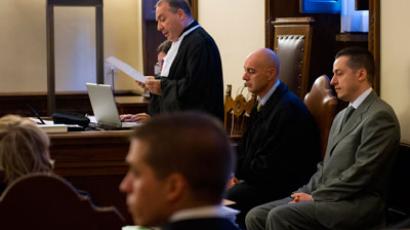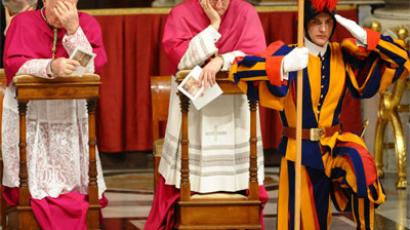Holy reveal: Vatican bank publishes annual report for the first time

For the first time in its 125-year history, the Vatican bank has disclosed its annual financial report to the public. The bank seeks to be more transparent amid the investigation into an alleged money-laundering scandal.
The report covers details from 2012, during which the Vatican bank - formally known as the Institute for Religious Works (IOR) - was accused of money laundering and lack of diligence in allowing non-religious businessmen to hold accounts in what amounted to an international offshore tax haven.
Nevertheless, 2012 was an “economically successful year" for the IOR, as net earnings rose to 86.6 million euros (US$116.95 million). The numbers are up four-fold from the 20.2 million euro profit made in 2011, the financial report states.
The lion’s share of the proceeds - 54.7 million euros - was given to the Pope to carry out the Church's mission around the world, according to the document.
Aside from the earnings, the 100-page report reveals that the IOR possessed 41.3 million euros worth of gold, metals, and precious coins, owned a real estate company, and was bequeathed two investment properties worth 1.9 million euros. It also made some 25.8 million euros worth of loans in 2012.
The balance sheet shows a total of 4.98 billion euros in assets and 769 million euros in equity funds. The assets were primarily held in bonds and money market accounts.
Complete transparency, ‘zero tolerance’ for illegitimacy
Bank President Ernst Von Freyberg, who started his job this year, said the report was an attempt to meet the bank’s commitment to transparency.
"The annual report seeks to contribute to the transparency which the Catholic Church, our customers, our correspondent banks, our authorities and the public rightfully expect," he said.
However, Von Freyberg stated that 2013 is not expected to be as successful.
"Overall, we expect 2013 to be marked by the extraordinary expenses for the ongoing reform and remediation process, and the effects of rising interest rates," he said in a statement.
The bank has around 18,900 clients which include religious orders, Vatican embassies, cardinals, and foreign embassies that have connections with the Holy See.
The Vatican has long insisted the IOR isn't a bank, but rather a unique financial institution that manages assets for religious works and charity. This has helped the institution to avoid typical banking regulations.
The report follows a money laundering scandal in June 2012 which involved senior cleric Monsignor Nunzio Scarano and two others who were arrested by Italian police after allegedly trying to transfer 20 million euros ($26 million) illegally. Following the scandal, the Vatican froze the account of the cleric, saying it would have "zero tolerance for any activity, whether conducted by laity or clergy, that is illegal or outside the Statutes of the Institute.”
In August, newly elected Pope Francis stepped up the fight against corruption, strengthening supervision of financial transactions at the IOR by issuing a decree to fight against illegal transactions.
Recently, the Pope also appointed a committee to prepare a report on how to reform the bank – which does not exclude the possibility of closing it down.














